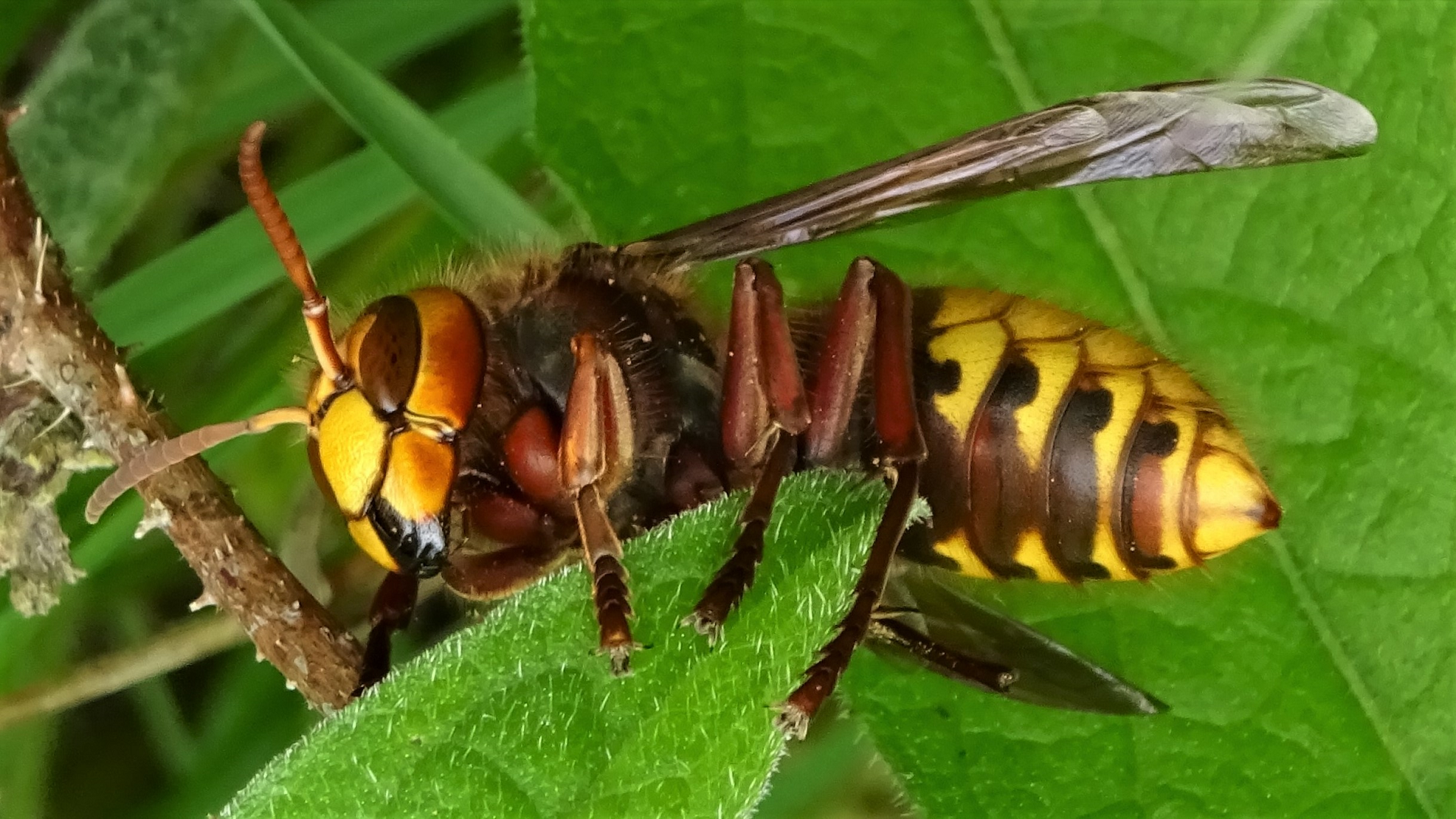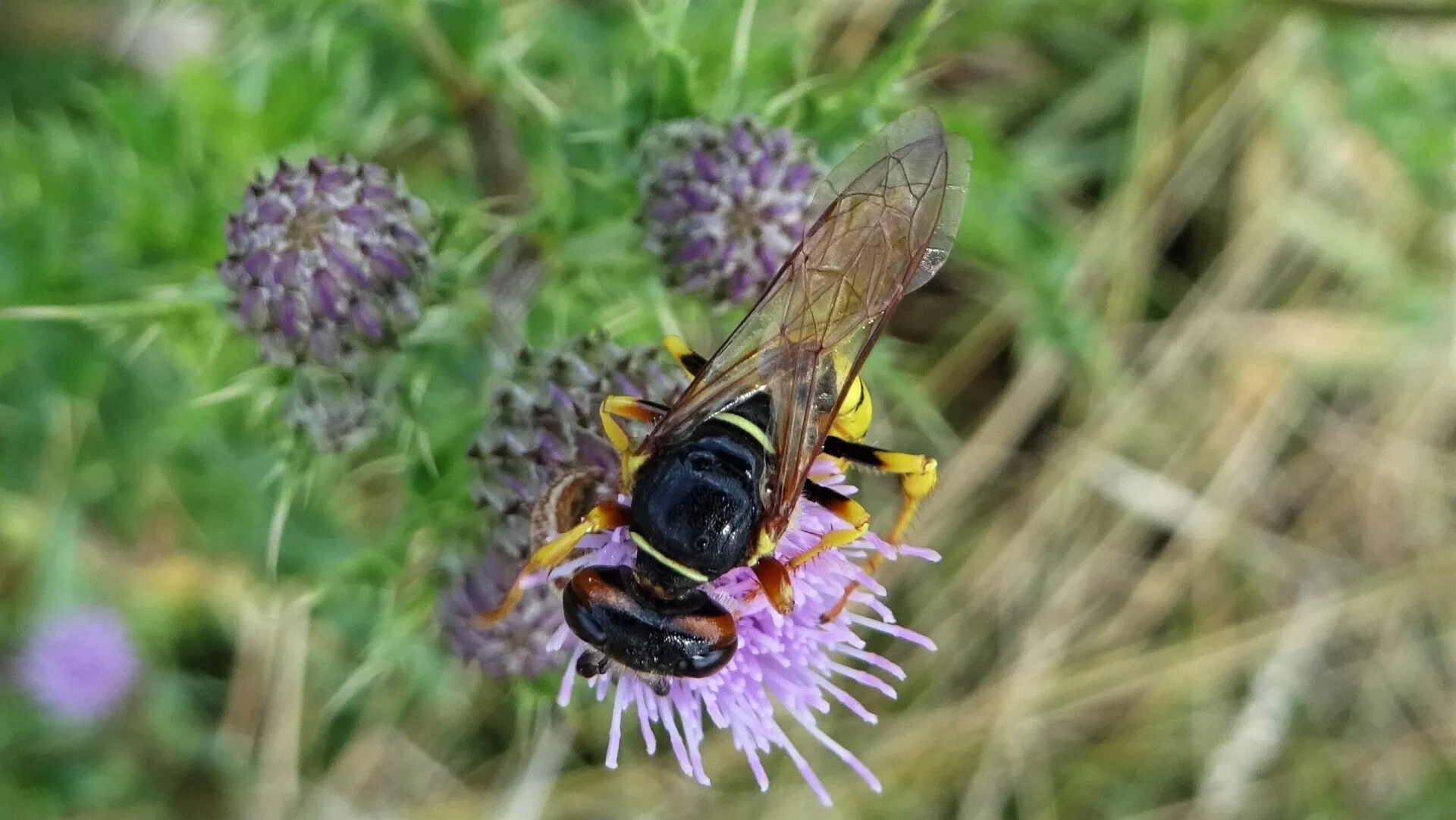Hymenoptera are a large insect order that includes the bees, wasps, ants and sawflies. Wasps are flying insects with narrow waists. There are social or solitary types. They are important predators that help control insect pests.
European Hornet
Vespa crabro
Hornets chew wood to make papery pulp for building nests. Despite having a fearsome reputation the European Hornet will not normally sting unless provoked. As winter approaches Queen hornets hibernate. They seek out shelter in dry places to survive the cold, sometimes finding refuge in leaf piles, tree cavities and buildings.



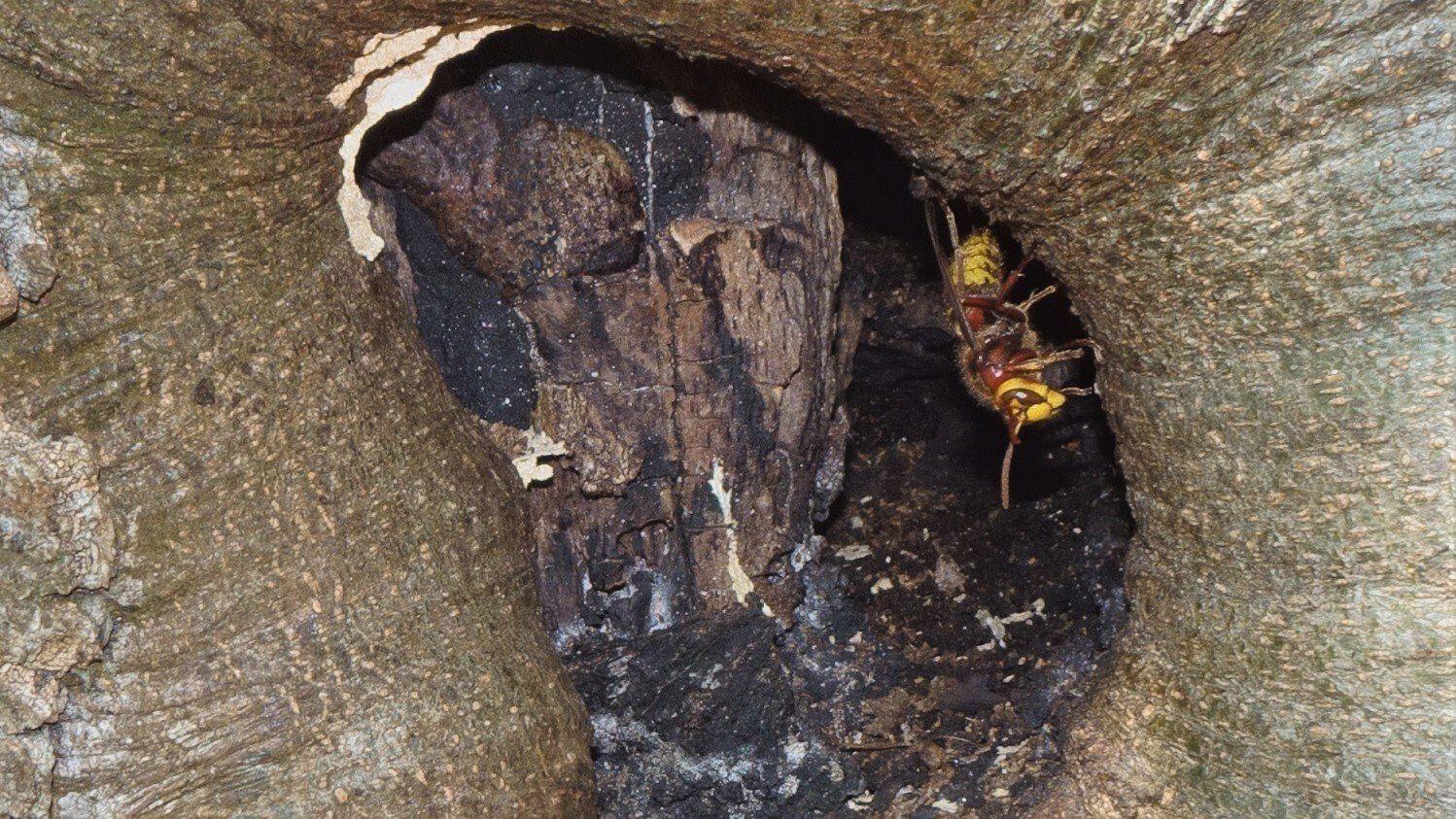
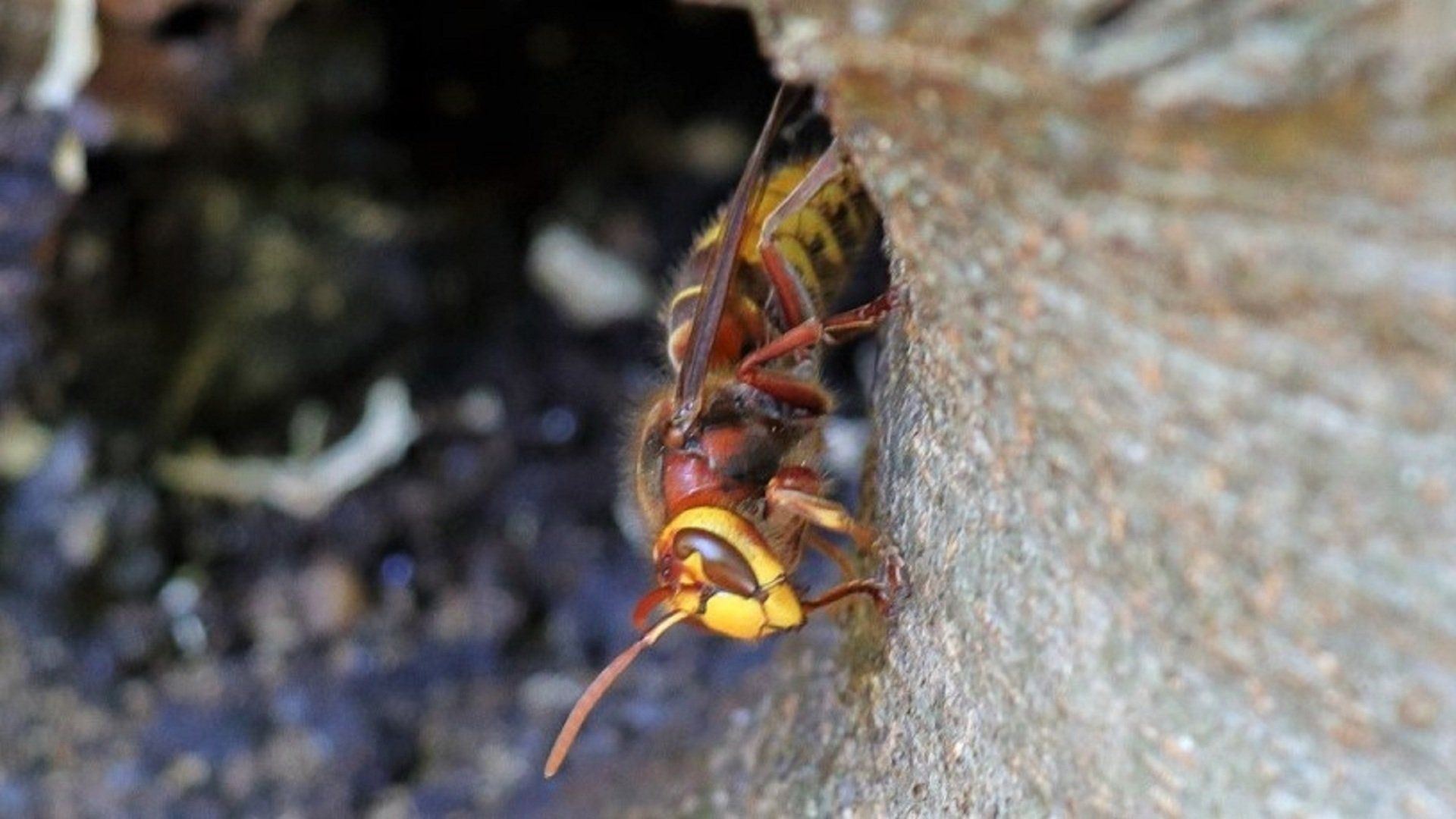
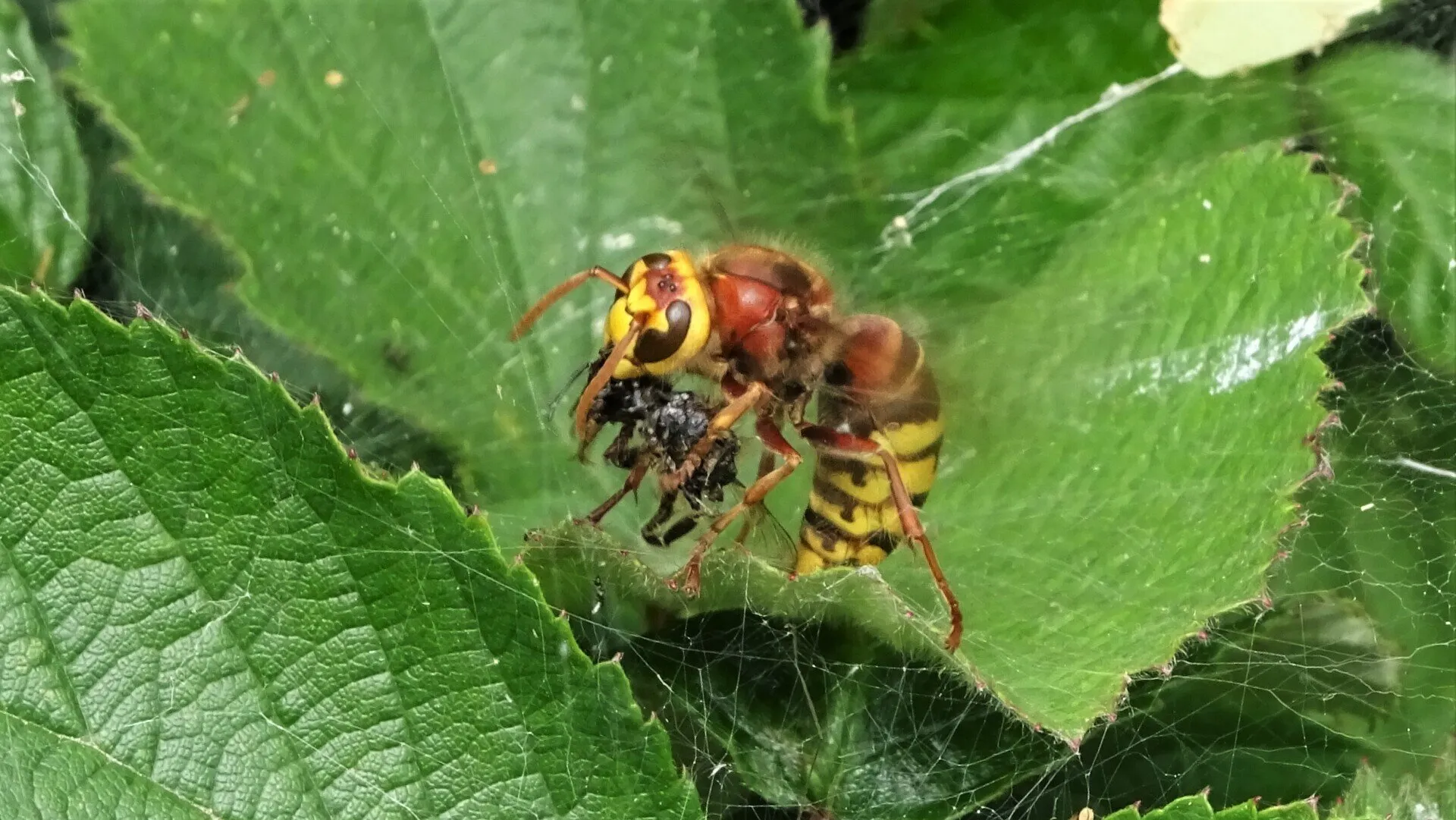
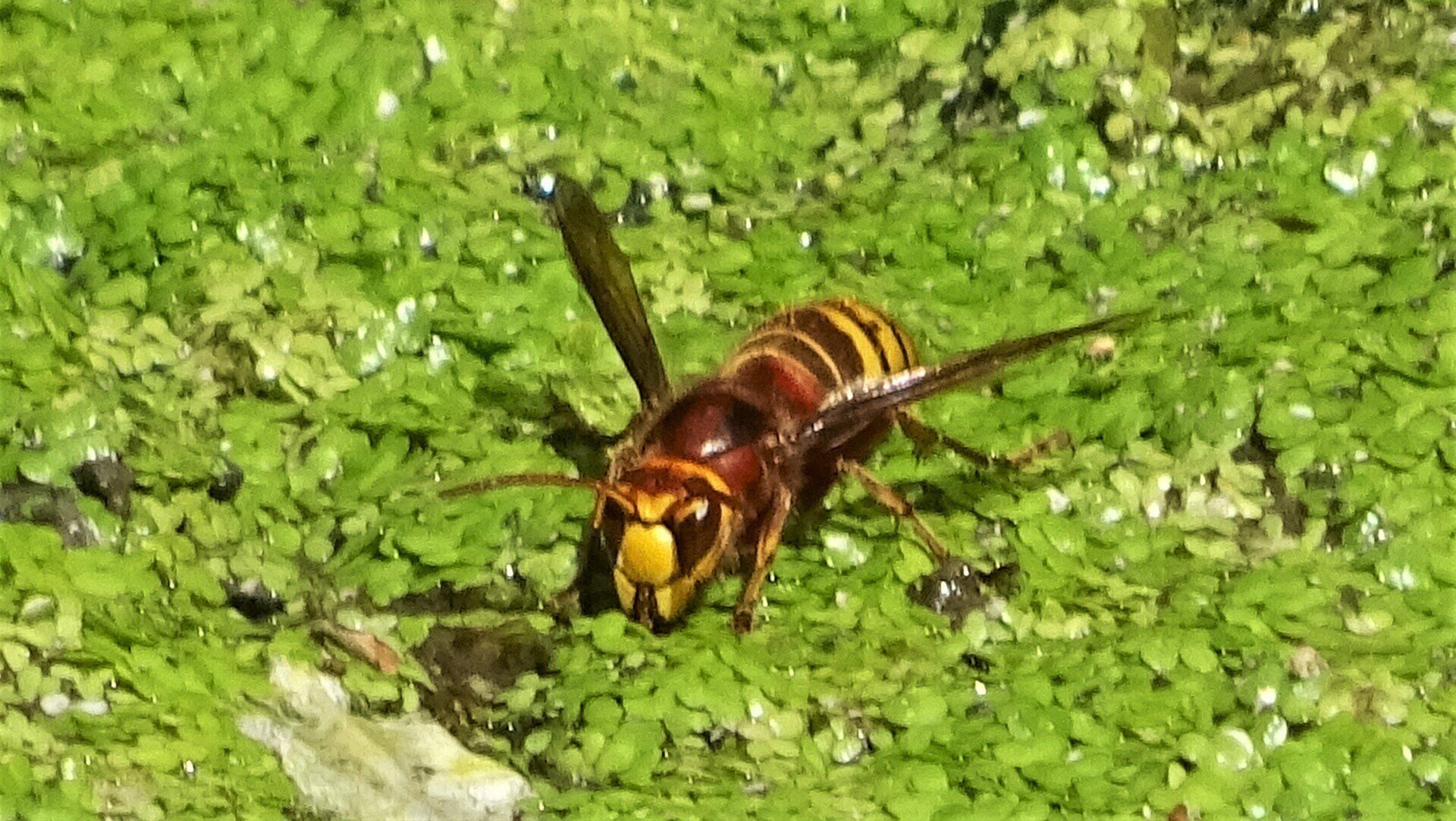
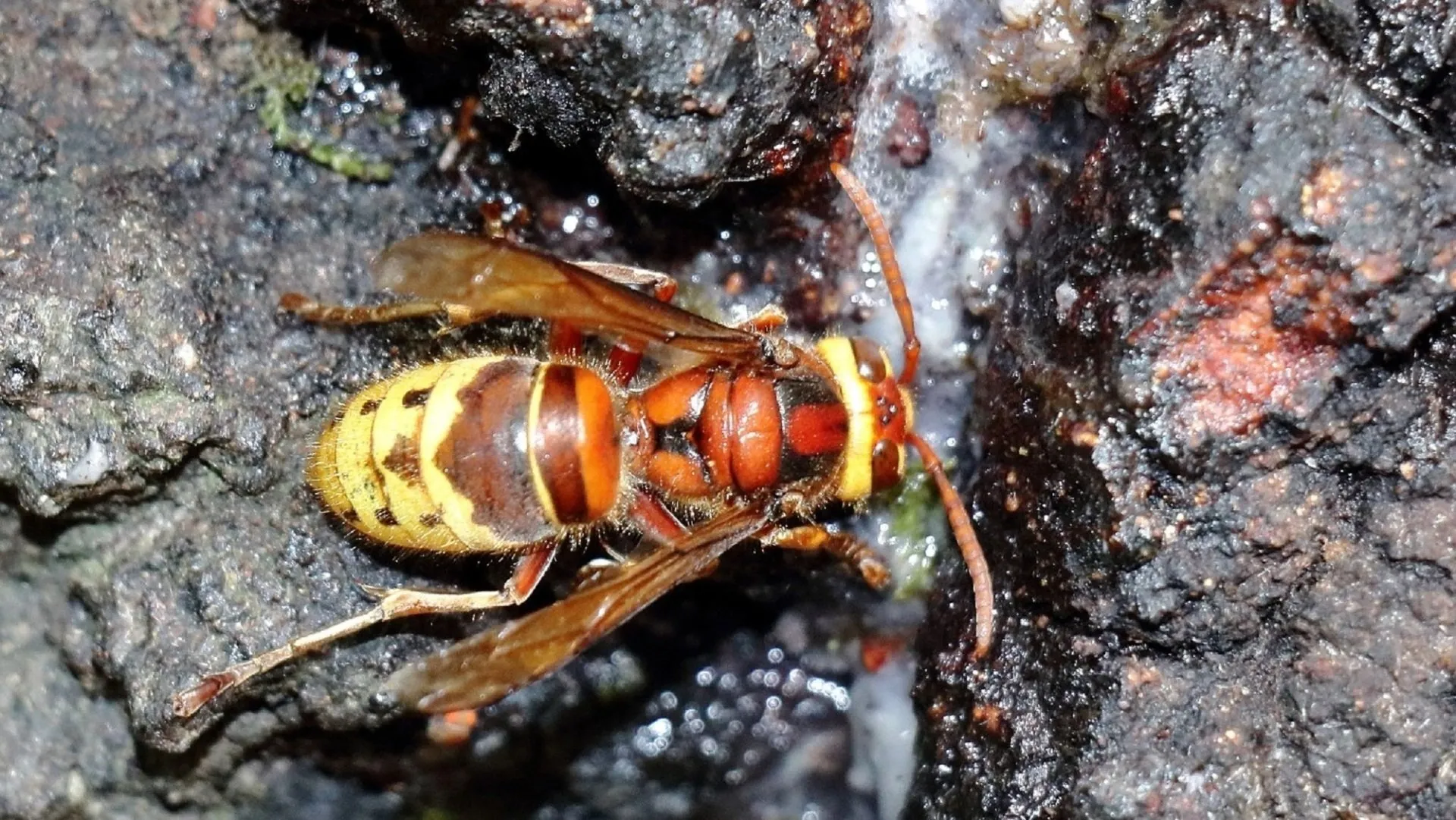
#
Bee Wolf
Philanthus triangulum
Until quite recently the Bee Wolf was considered a rarity and vulnerable in the UK. It is also known as the 'Bee Killer' because it preys on Honey bees. Numbers are now steadily increasing in southern England. Bramble, common ragwort, hemp-agrimony and creeping thistle are some of the plants the Bee Wolf collects nectar from during July to mid-September.
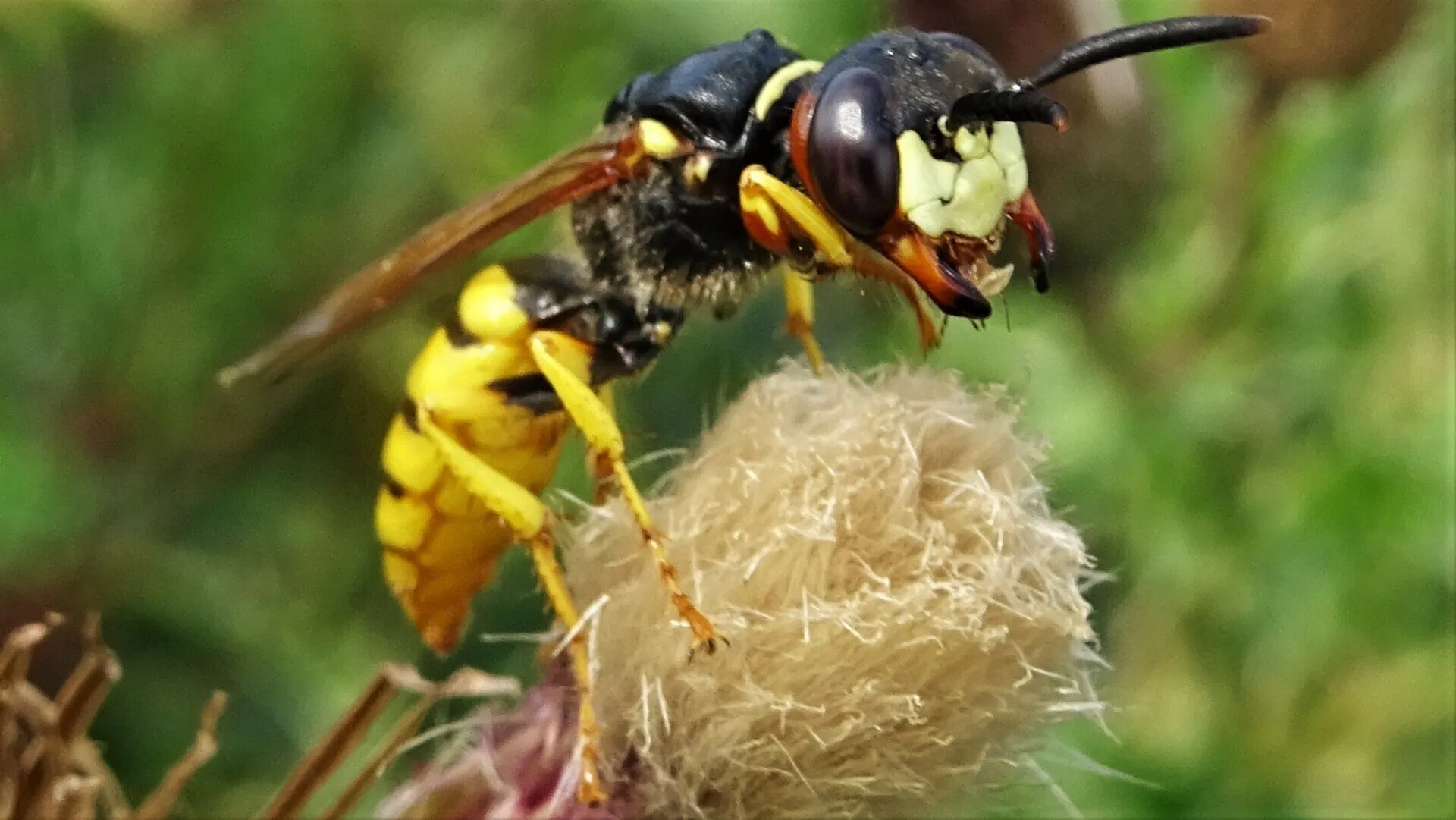
Jewel Wasp
Chrysididae
Members of the family Chrysididae are known as Jewel or Cuckoo Wasps. They are small (4-11mm) and their bodies often have a metallic iridescence. Their eggs are laid in nests of unrelated species. The larvae hatch to feed on eggs and young belonging to the host before eating the host's food supply. Chrysidids are always solitary, usually flying on hot, dry, sunny days. There are a number of similar-looking species.

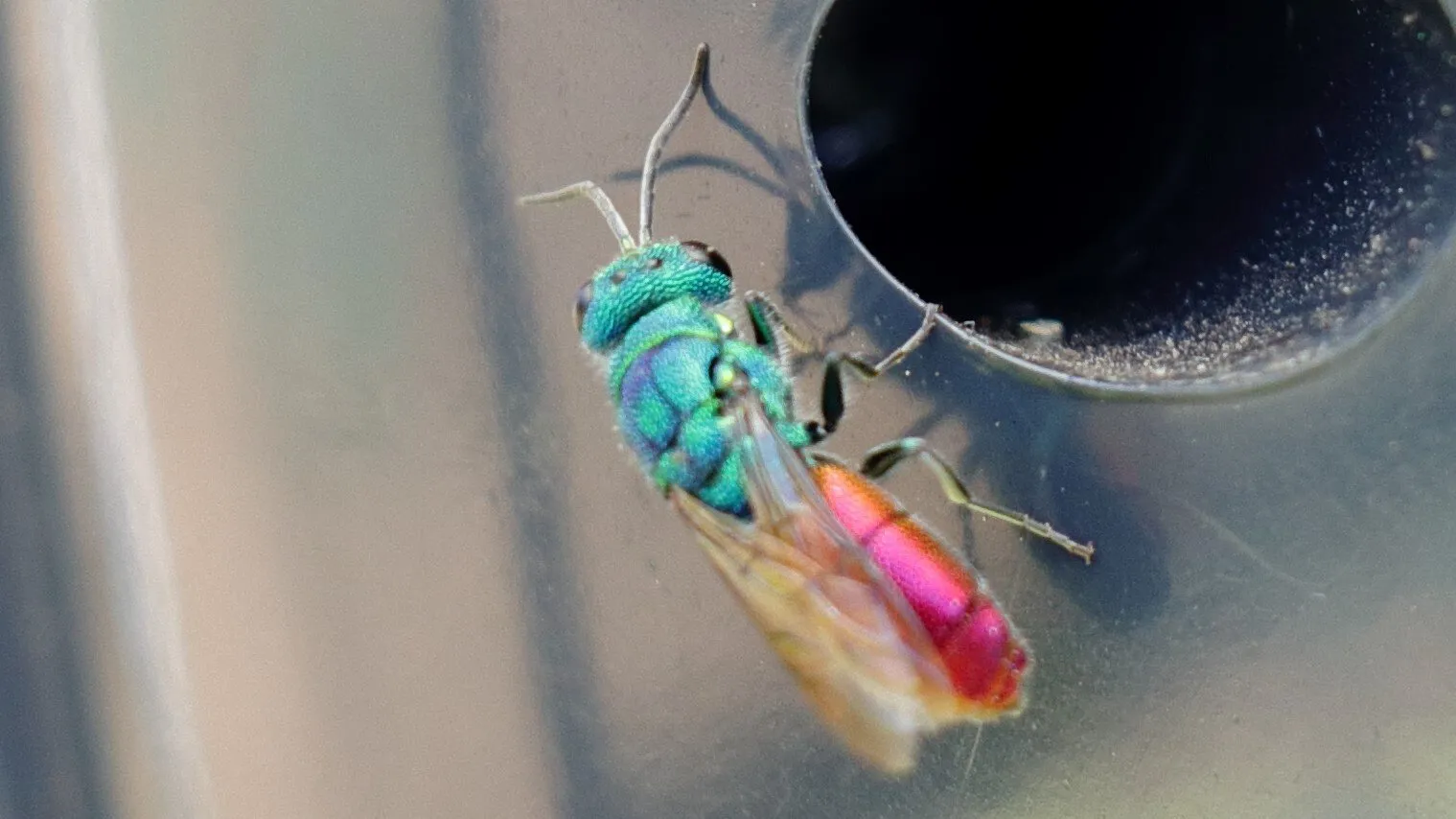
#
Alder Wood-wasp
Xiphydria camelus
The Alder Wood-wasp has an black abdomen with white spots on the sides. Its larvae inhabit damp locations boring into the wood of alder and birch trees.


#
© hainaultforest.net. All rights reserved.


